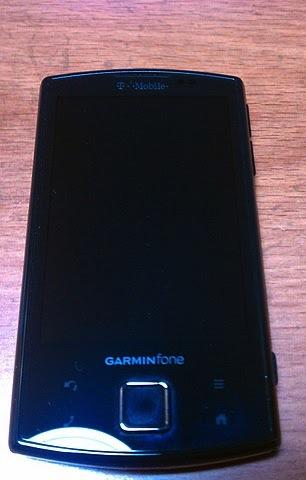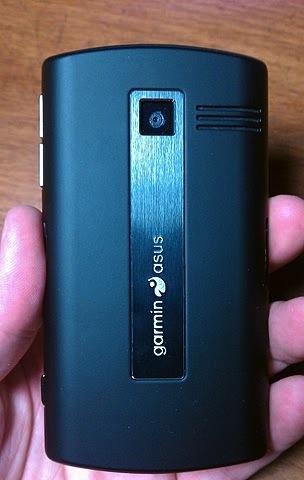
What's Good: The Garmin functionality of the handset is very good, and I'm fond of the design.
What's Bad: Garmin-Asus' user interface unnecessarily hampers the capabilities of Android.
The Verdict: While I have a great deal of respect for Garmin's GPS abilities (directions were always fantastic), I just don't see buying a phone that centers so heavily on navigation alone. Plus, Google Maps and Navigation does a fantastic job on its own.

From a design perspective, the Garminfone is quite nice. The black and the chrome accents give it a polished appearance, and make it look like it's worth a few bucks. The keyboard is a custom one developed for the device, and typing was relatively easy. After a few minutes, I was sending messages with ease. For whatever reason, the device is running Android 1.6. In mid-2010, it's really unacceptable to see a device packing anything below Android 2.1. In addition to the usual Gmail services, the Garminfone offers Microsoft Exchange support through Exchange ActiveSync.
On the topic of Android, the biggest frustration for me is Garmin-Asus' customized user interface. Thanks to it, the Garminfone is essentially a GPS system with a few Android features tacked on. Customization options are few and far between, and there's no ability to apply widgets to the home screen. It's a very ho-hum Android experience, and it surprises me that Garmin-Asus opted not to let some of Android's best features shine. The crux of the phone - the three big buttons on the home screen - could have easily been placed in a regular build of Android.
Call quality has been decent using T-Mobile in the Charlotte metro area, but when I took the unit to a T-Mobile dead zone, I was unable to maintain a call. In the good areas, callers had no problems understanding me, and call quality was clear on my end. Speakerphone has worked well to date, and I was able to pair my Plantronics Voyager Pro to the device without issue.

Offering an estimated talk time of four hours, battery life on the Garminfone leaves a lot to be desired. With moderate use encompassing calling, texting, e-mail, occasional navigation, and use of the Android Market, the 1150 mAh battery was dead in ten hours. Given that the primary purpose of this phone is for navigation, I would expect people to increase their use when they're traveling. I'm still conducting formal tests, but I'd venture to say that a car charger (included) and a spare battery should be handy at all times.
The Garminfone is one of those devices where I feel like a great deal of R&D was placed into one field (navigation), and not enough in other areas like the overall user interface, camera, battery, and media functionality. I'd recommend the Garminfone to the person that was solely concerned about navigation and navigation alone. At $199, I would much rather purchase an EVO 4G, myTouch 3G Slide, DROID Incredible, or Nexus One, and rely on Google Maps and Navigation. If the Garminfone was priced below $100, my argument might be different, but $200 should buy more than a device running Android 1.6 with a 3.0-megapixel camera.